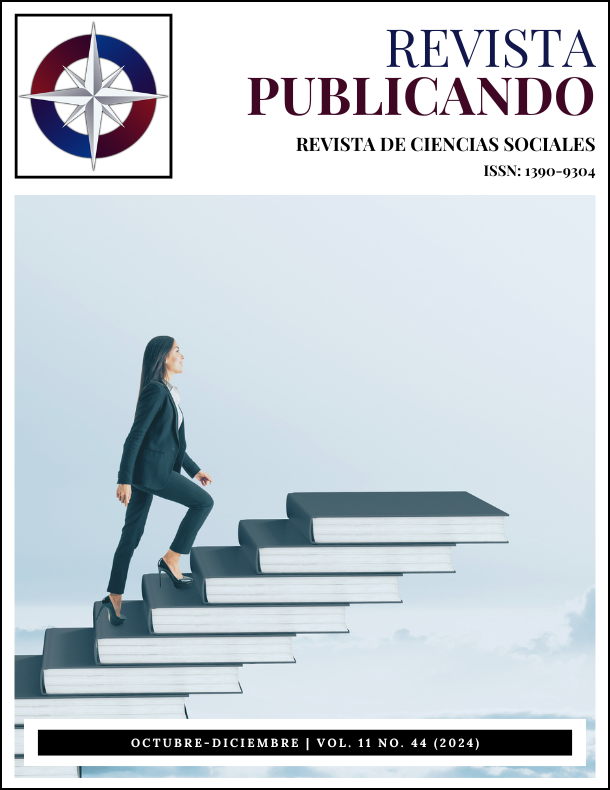Resumen
Este estudio evalúa la implementación y el impacto de las herramientas educativas digitales en las aulas de lenguas extranjeras desde la perspectiva tanto de los profesores como de los estudiantes en las escuelas secundarias serbias antes, durante y después de la pandemia de COVID-19. La investigación analiza las herramientas digitales utilizadas, los desafíos que enfrentan y los beneficios percibidos de estas herramientas para mejorar las experiencias de enseñanza y aprendizaje. Los datos cuantitativos se recopilaron a través de encuestas en línea distribuidas a 173 profesores de idiomas y a 126 estudiantes de cuarto año de secundaria, enfocándose en sus experiencias con herramientas digitales en varios modelos de instrucción: tradicional, en línea e híbrido. Los resultados revelan discrepancias significativas entre las percepciones de profesores y alumnos sobre el uso de herramientas digitales y su frecuencia. Si bien la mayoría de los docentes informaron un uso frecuente de herramientas digitales, los estudiantes indicaron una exposición menos frecuente. Los hallazgos clave indican que herramientas digitales como Google Classroom, Kahoot! y Quizziz se utilizaron ampliamente durante la pandemia y continuaron utilizándose después de la misma. Todos reconocieron los beneficios de las herramientas digitales para crear entornos de aprendizaje dinámicos y atractivos, pero se observaron desafíos como mantener la motivación de los estudiantes y equilibrar la atención en modelos híbridos. Se subraya la importancia de ajustar los programas de formación a las necesidades de los docentes y sugiere investigaciones futuras para evaluar la efectividad de dichos programas.
Referencias
Al-Mawee, W., Kwayu, K. M., & Gharaibeh, T. (2021). Student's perspective on distance learning during COVID-19 pandemic: A case study of Western Michigan University, United States. International journal of educational research open, 2, 100080. https://doi.org/10.1016/j.ijedro.2021.100080
Bates, A.W. (2022). Teaching in a Digital Age: Guidelines for Designing Teaching and Learning (3rd ed.). Tony Bates Associates Ltd. https://pressbooks.bccampus.ca/teachinginadigitalagev2/
Council of Europe (2020). Common European Framework of Reference for Languages: Learning, teaching, assessment – Companion volume. Council of Europe Publishing, Strasbourg. www.coe.int/lang-cefr.
Council Recommendation of 22 May 2018 on key competences for lifelong learning (2018). Official Journal of the European Union, C 189/7, 1-13. https://eur-lex.europa.eu/legal-content/EN/TXT/?uri=CELEX:32018H0604(01)
Degirmenci, R. (2021). The Use of Quizizz in Language Learning and Teaching from the Teachers’ and Students’ Perspectives: A Literature Review. Language Education and Technology (LET Journal), 1(1), 1-11.
Diert-Boté, I. (2023). Positivity in the English language learning classroom: Analyzing teacher-student moments of contact. Spanish Journal of Applied Linguistics, 36(2), 357-385. https://doi.org/10.1075/resla.20057.die
European Union (2020). Digital Education Action Plan (2021-2027). https://education.ec.europa.eu/focus-topics/digitaleducation/action-plan.
Gagić, A., Gajić, T., Gavranović, V., Maenza, N., & Veljković Michos, M. (2023). Digital Tools for Language Learning: Exploring Teachers’ Innovative and Engaging Practices. International Scientific Conference on Information Technology, Computer Science, and Data Science Sinteza 2023 Book of Proceedings, 281-287. https://doi.org/10.15308/Sinteza-2023-281-287
Gajić, T., & Maenza, N. (2019). Mobile Applications in Teaching Foreign Languages in Tertiary Education. Teaching Innovations, 32(4), 133-142.
Gavranović, V., Michos, M. V., & Alčaković, S. (2024). Utilización de la evaluación formativa para mejorar los resultados de aprendizaje de estudiantes en los ambientes híbridos de la enseñanza superior. Didáctica. Lengua y literatura, (36), 145-152. https://dx.doi.org/10.5209/dill.87558
Johansson, W., & Söderlund, A. (2018). Teachers’ Views on Digital Tools in the English as a Second Language Classroom. Unpublished Thesis. Malmö University.
Koet, T. W., & Aziz, A. A. (2021). Teachers’ and Students’ Perceptions towards Distance Learning during the Covid-19 Pandemic: A Systematic Review. International Journal of Academic Research in Progressive Education and Development, 10(3), 531–562. http://dx.doi.org/10.6007/IJARPED/v10-i3/11005
Lošonc, A., Ivanišević, A., Katić, I., Radišić, M., & Pavlović, A. (2021). Online Learning: Adapting to the Pandemic or the Definitive Technologization of Education? XXVII Conference on Development Trends: Online Teaching at Universities Proceedings, 62-65.
Maenza, N., Gajic, T., Veljković Michos, M., & Gagić, A. (2024). Understanding the Role of Digital Tools in Serbian High School Language Education. International Scientific Conference on Information Technology, Computer Science, and Data Science Sinteza 2024 Book of Proceedings, 304-309. https://doi.org/10.15308/Sinteza-2024-304-309
Ministry of Education, Science and Technological Development (2019). Digital Competence Framework – Teacher for the Digital Age 2019. https://prosveta.gov.rs/wp-content/uploads/2021/10/2019_ODK_Nastavnik-za-digitalno-doba.pdf
Mishra, P., & Koehler, M. J. (2006). Technological Pedagogical Content Knowledge: A Framework for Teacher Knowledge. Teachers College Record, 108(6), 1017–1054. https://doi.org/10.1111/j.1467-9620.2006.00684.x
Sadiku, M. N., Adebo, P. O., & Musa, S. M. (2018). Online teaching and learning. International Journals of Advanced Research in Computer Science and Software Engineering, 8(2), 73-75. https://doi.org/10.1177/10567879231202485
Sim, J., & Ismail, H. (2023). Using Digital Tools in Teaching and Learning English: Delving into English Language Teachers’ Perspectives. Creative Education, 14, 2021-2036. https://doi.org/10.4236/ce.2023.1410129
Strasser, T. (2023). Digital tools in foreign language teaching and learning: Educational applications. In N. Pachler & A. Redondo (Eds.), A Practical Guide to Teaching Foreign Languages in the Secondary School (3rd ed., pp. 62-80). Routledge.
Tao, Y., & Zou, B. (2023). Students’ perceptions of the use of Kahoot! in English as a foreign language classroom learning context. Computer Assisted Language Learning, 36(8), 1668-1687, https://doi.org/10.1080/09588221.2021.2011323
United Nations (2020). Education in the time of Covid-19 Report. https://repositorio.cepal.org/bitstream/handle/11362/45905/1/S2000509_en.pdf
Veljković Michos, M., & Bošković Marković, V. (2021). Information and Communication Technologies in Foreign Language Teaching before and during Covid-19 Pandemic: A Review of Research at University Level. Annals of the Faculty of Philology, 33(2), 135-150. https://doi.org/10.18485/analiff.2021.33.2.7
Vidosavljević, M. (2023). Foreign Language Teaching in a Digital Environment: Teachers’ Attitudes and Beliefs. Philologist – journal of language, literary and cultural studies, 14(27), 153-172. https://doi.org/10.21618/fil2327153v

Esta obra está bajo una licencia internacional Creative Commons Atribución-NoComercial-CompartirIgual 4.0.
Derechos de autor 2024 Tijana Gajić, Maja Veljković Michos, Aleksandra Gagić, Neda M. Maenza




